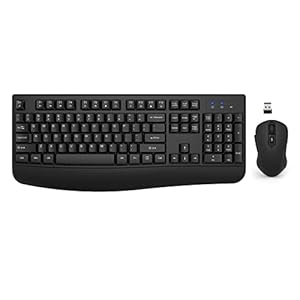OpenAI has deserted its controversial restructuring plan. In a dramatic reversal, the corporate said Monday it could not attempt to separate management of its for-profit arm from the non-profit board that presently oversees operations. "We made the choice for the nonprofit to retain management of OpenAI after listening to from civic leaders and fascinating in constructive dialogue with the places of work of the Lawyer Basic of Delaware and the Lawyer Basic of California," mentioned Bret Taylor, the chairman of OpenAI.
OpenAI had initially argued its current construction wouldn’t enable its nonprofit to "simply do greater than management the for-profit." It additionally mentioned it wanted extra money, a mere two months after securing $6.6 billion in new investment. "We as soon as once more want to lift extra capital than we'd imagined," the corporate wrote in December. "Buyers need to again us however, at this scale of capital, want standard fairness and fewer structural bespokeness."
OpenAI's earlier plan referred to as for the nonprofit to cede absolute management of the for-profit, in return for no matter diploma of management got here with the quantity of inventory it was granted by way of the reorganization course of.
This was the controversial a part of OpenAI's plan, with many, together with former workers, labor and nonprofit groups and even Elon Musk, voicing opposition to the proposal. Now, the corporate says its nonprofit will retain management and change into a "massive shareholder within the PBC."
"How is the nonprofit going to take care of management? How will that objective be superior?" asks Jill Horwitz, a visiting professor of legislation at Northwestern College. "We all know from the press that OpenAI plans to nominate all of the board members of the working entity. Will that occur endlessly? Who will they be? Will it’s self-perpetuating? Will the for-profit buyers have a say in who these board members are?"
Put one other manner, OpenAI hasn't mentioned the precise construction that it intends to implement. In keeping with Professor Michael Dorff, govt director of the Lowell Milken Institute for Enterprise Regulation and Coverage at UCLA, the corporate might undertake one of some totally different choices.
"In the event you had one class of inventory, one vote per share, they’d elect a board. You can simply give the nonprofit nearly all of the shares, after which they’d then elect a majority of the board. They might subsequently be in cost, at the least for some time," he says.
"Extra steady governance preparations may very well be completed by having twin class shares, the place the nonprofit would have a category of inventory and they’d be the one house owners of that class of the inventory that’s both tremendous voting shares, once more, giving it a majority, and even higher, you may outline a category of inventory and say it has the precise to elect a majority of the board."
Briefly, the corporate hasn't mentioned the way it plans to make sure its nonprofit maintains management. The nonprofit could have a "massive" stake to begin, however there are just a few totally different ways in which stake may very well be diluted. Even in the event you put aside the concept of an IPO for now, the corporate might nonetheless challenge new shares or perform a inventory break up. In these eventualities, if OpenAI's non-profit doesn't personal particular shares, its management of the corporate could be weakened.
In keeping with Bloomberg, Microsoft has but to log off on OpenAI's proposal. The corporate has invested almost $14 billion into OpenAI. Underneath the phrases of its October funding spherical, OpenAI had two years to remodel itself right into a for-profit enterprise. If it failed to take action, the $6.6 billion it secured would flip into debt. We don't know for certain, however the query of management is probably going entrance and middle within the negotiations between Microsoft and OpenAI, with the corporate's monetary future at stake. Complicating issues is that no matter association the 2 come to, it must be rubber stamped by the state attorneys normal of California and Delaware.
"We stay up for advancing the main points of this plan in continued dialog with [the state AGs], Microsoft, and our newly appointed nonprofit commissioners," Altman wrote in his letter.
Components of OpenAI's earlier plan stay unchanged. As earlier than, the corporate will reorganize its for-profit subsidiary right into a public benefit corporation. In doing so, OpenAI nonetheless plans to remove the present capped revenue construction that limits investor returns to 100x, with extra income reserved for the nonprofit. OpenAI has but to document a revenue; as of final 12 months, the corporate recorded round $5 billion in losses.
"This isn’t a sale, however a change of construction to one thing easier," wrote OpenAI CEO Sam Altman in a letter to workers shared by the corporate. "As a substitute of our present advanced capped-profit construction—which made sense when it seemed like there is perhaps one dominant AGI effort however doesn't in a world of many nice AGI corporations—we’re transferring to a standard capital construction the place everybody has inventory."
This text initially appeared on Engadget at https://www.engadget.com/ai/openais-new-for-profit-plan-leaves-many-unanswered-questions-193942365.html?src=rss
Trending Merchandise

Wi-fi Keyboard and Mouse Combo, EDJO 2.4G Full-Sized Ergonomic Pc Keyboard with Wrist Relaxation and three Stage DPI Adjustable Wi-fi Mouse for Home windows, Mac OS Desktop/Laptop computer/PC

SAMSUNG 27″ Odyssey G32A FHD 1ms 165Hz Gaming Monitor with Eye Saver Mode, Free-Sync Premium, Height Adjustable Screen for Gamer Comfort, VESA Mount Capability (LS27AG320NNXZA)

ASUS VA24DQ 23.8â Monitor, 1080P Full HD, 75Hz, IPS, Adaptive-Sync/FreeSync, Eye Care, HDMI DisplayPort VGA, Frameless, VESA Wall Mountable ,BLACK

Logitech MK120 Wired Keyboard and Mouse Combo for Windows, Optical Wired Mouse, Full-Size Keyboard, USB Plug-and-Play, Compatible with PC, Laptop – Black

ASUS 31.5” 4K HDR Eye Care Monitor (VP327Q) – UHD (3840 x 2160), 99% sRGB, HDR-10, Adaptive-Sync, Audio system, DisplayPort, HDMI, Flicker Free, Blue Gentle Filter, VESA Mountable,Black










